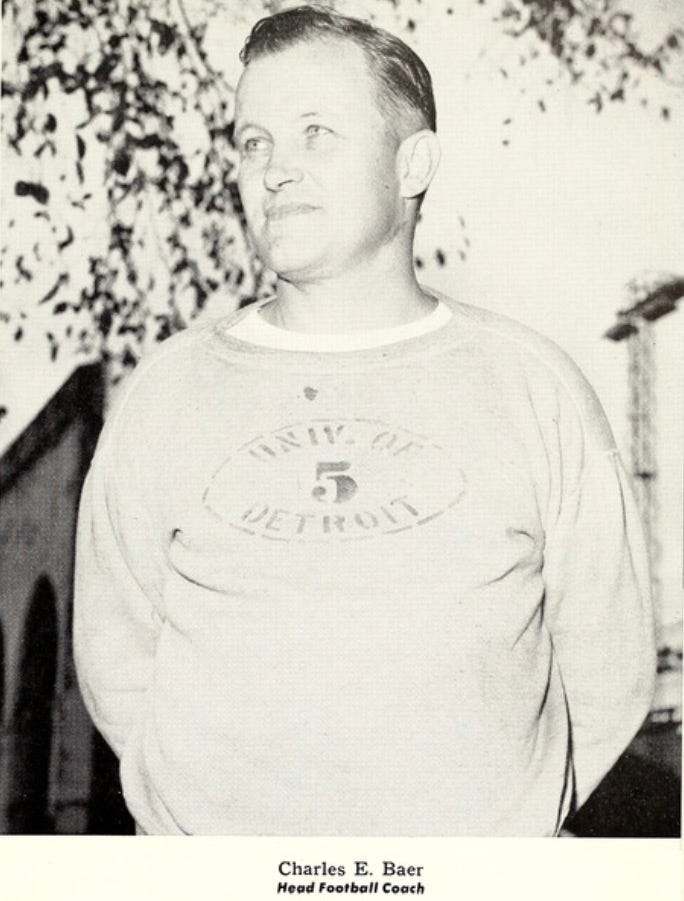Today's Tidbit... Football Experiments In the Motor City
Back when the University of Detroit played football, their coach Chuck Baer wanted a deeper understanding of how his Modern T formation offense threatened the six and seven-man defenses still common in those days. His questions involved the speed in which T formation backs hit the line of scrimmage and whether defensive linemen could read the play and get to the hole the offense targeted.

Coaches nationwide faced the same challenge because Single Wing, Double Wing, and Notre Dame Box offenses long snapped the ball to backs who waited to receive the snap before moving forward. The Modern T gaining prominence had the QB take the snap and hand off the ball to a running back who had started forward at the snap. By not waiting to get the ball, they hit the hole faster, but Baer wanted to know how quickly they got there and how fast the defense could react.
With typical Detroit precision, Baer put his concerns to the test with help from Detroit's Physics Department, which provided the measurement expertise and equipment.
Running several types of plays, they determined that one of their halfbacks hit the line on a dive play in 62/64th of a second, while an off-tackle play took 1 and 13/64th seconds. Their quickest defensive lineman needed 40/64th to contact a dummy where an offensive lineman would be. This result told Baer that a solid defensive lineman had the time to stop a play run directly at him.

Conversely, the fastest defensive lineman needed 1 and 12/64th seconds to reach the off-tackle spot when unblocked, so any block that slowed down the defensive lineman gave the offense a significant advantage. Baer concluded that defenses could not rely on six and seven-man defensive lines to stop the T. Instead, they needed to move players off the ball, ceding a yard or two per play but allowing their backer-ups (aka linebackers) to read and react to the play. In effect, the T formation running attack forced changes in defenses, to say nothing of the passing attacks and option plays that came with the T.
While reviewing the University of Detroit's 1948 yearbook looking for images to illustrate this Tidbit, I came across the image below. It has nothing to do with the article but is a fabulous old-time football image worth sharing.

Football Archaeology is reader-supported. Click here to buy one of my books or otherwise support the site.


The mud shown in that last picture made me go take a shower